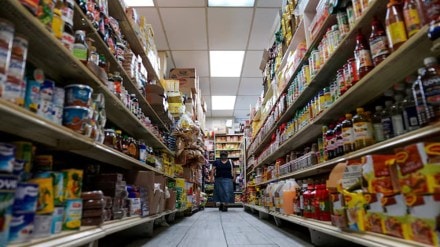Sales growth in Indian FMCG sector slowed to 5.4 per cent in volume during September quarter mired by disruptions due to GST rate changes, though value growth jumped to 12.9 per cent, according to the latest report from data analytics firm NielsenIQ.
The rural market also slowed down from 8.4 per cent to 7.7 per cent year-on-year, but continued to outpace the pace of sales in urban areas for the seventh consecutive quarter, the report said.”The market recorded a 5.4 per cent rise in volume alongside a 7.1 per cent increase in prices, with unit growth outpacing overall volume growth — signalling a stronger consumer preference for smaller packs,” it said.
Urban market, which forms bulk of fast-moving consumer goods (FMCG) demand, is recovering moderately, particularly in smaller towns. Sequentially, it experienced slowdown.
Rural consumption growth outpaces urban
Rural market, which is of small packets, is driven by affordability, accounts for around 38 per cent of the FMCG demand.”Rural India has recorded a 7.7 per cent increase compared to 3.7 per cent in urban areas, outpacing urban regions in volume growth for the seventh consecutive quarter.
However, the gap is narrowing as urban areas show signs of sequential recovery,” the report said, adding, “this recuperation is primarily driven by smaller urban towns.” In the March quarter and September quarter of 2025, rural market had reported a growth of 8.3 per cent and 8.4 per cent, respectively.
Metropolitan areas continued to experience a decline in offline sales owing to a shift towards e-commerce. However, modern trade (MT) is on a revival trajectory as well.”The Indian FMCG sector continues to demonstrate resilience, with rural markets leading the charge for the seventh consecutive quarter.
Ecommerce remains key contributor
While urban recovery is gaining traction, particularly in smaller towns, rural demand remains the cornerstone of volume expansion. E-commerce continues to be a key growth engine, especially in the top eight metros,” said Sharang Pant, Head of Customer Success – FMCG, NielsenIQ in India.
The e-commerce also reported growth in FMCG and its share in the overall sales went up by 1 per cent across all eight metros.”Q3 ’25 (September quarter) omni-channel volume growth remains driven by e-commerce, with modern trade also contributing this quarter. However, a marginal softening in e-commerce volume growth is observed in Q3 ’25,” it said.
Economic measures’ effect
With inflation easing, the outlook for consumption remains optimistic and the impact of GST changes on consumption is expected in the next two quarters, he added.
Besides, the FMCG industry’s transition to GST 2.0 also temporarily slowed down its growth in the home and personal care (HPC) segment, which includes lotions, creams, personal hygiene products as shampoos, soaps, dental care products, diapers and household items.”In Q3 2025, food consumption largely remained stable at 5.4 per cent, driven by a balance in increased volumes in staples categories and a decline in volumes in impulse and habit-forming categories.
Meanwhile, home and personal care slowed down in volumes with 5.5 per cent consumption growth,” it said. Over-the-counter categories, which are mainly sold through pharma channels, posted a robust 14.8 per cent increase in value sales, largely driven by a 9.7 per cent rise in prices.
In September quarter, small manufacturers continued to drive FMCG consumption in Q3 2025, supported by steady volume growth across both food and HPC categories on a lower base.” In contrast, large players saw a slowdown in consumption in the latest quarter,” it said.
